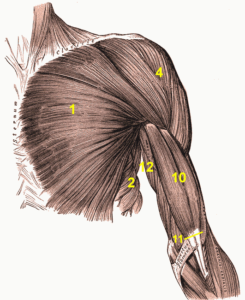 In the world of baseball, few aspects capture the imagination quite like the art of pitching. It's a dance between power and finesse, requiring athletes to harness every ounce of strength and precision in pursuit of victory. Central to this pursuit is the perennial question: does increasing arm strength truly enhance pitching velocity? While conventional wisdom might suggest a resounding "yes," the reality is far more nuanced. Join us as we embark on a journey to dissect the intricate relationship between arm strength and pitching velocity, uncovering insights that could reshape the way we approach training and performance in the realm of baseball. From the science behind the throw to the secrets of elite pitchers, prepare to explore the dynamic interplay of muscle, motion, and mastery in the pursuit of pitching perfection.
In the world of baseball, few aspects capture the imagination quite like the art of pitching. It's a dance between power and finesse, requiring athletes to harness every ounce of strength and precision in pursuit of victory. Central to this pursuit is the perennial question: does increasing arm strength truly enhance pitching velocity? While conventional wisdom might suggest a resounding "yes," the reality is far more nuanced. Join us as we embark on a journey to dissect the intricate relationship between arm strength and pitching velocity, uncovering insights that could reshape the way we approach training and performance in the realm of baseball. From the science behind the throw to the secrets of elite pitchers, prepare to explore the dynamic interplay of muscle, motion, and mastery in the pursuit of pitching perfection.
The Role of Increasing Arm Strength in Pitching Velocity
Unraveling the enigma of pitching velocity requires a deep dive into the intricate mechanics of the throwing motion. At first glance, it's easy to assume that the key to unleashing blistering fastball speeds lies solely in the strength of the arm. After all, the muscles of the arm, including the formidable Pectoralis major, Subscapularis, Supraspinatus, Infraspinatus, Teres minor, and Latissimus dorsi, play a pivotal role in propelling the ball towards home plate with ferocious velocity.
However, to reduce pitching performance to mere arm strength would be a gross oversimplification. Pitching velocity is a symphony of coordinated movements, with each muscle group and joint playing its part in the kinetic chain. From the explosive push-off of the legs to the seamless transfer of energy through the torso, every aspect of the pitching motion contributes to the final velocity of the ball.
While enhancing arm strength undoubtedly bolsters the firepower of a pitcher's arsenal, it's essential to view it as just one piece of the puzzle. Neglecting other crucial components, such as lower body strength and core stability, can lead to suboptimal results. In essence, the efficiency with which the entire body works together to generate power and transfer it to the ball determines pitching velocity rather than just the strength of the arm muscles.
So, while a strong arm may provide a solid foundation for pitching success, true velocity mastery lies in the harmonious coordination of all the moving parts. In the quest for pitching greatness, it's not just about building stronger arms but about cultivating a holistic approach to training that maximizes the potential of every muscle group involved in the throwing motion.
The Pitfalls of Overemphasizing Increasing Arm Strength
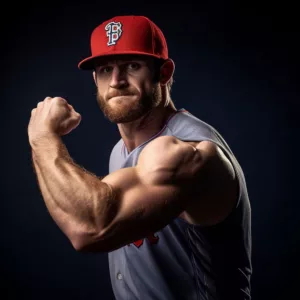 While the allure of a powerful throwing arm is undeniable, fixating solely on arm strength can inadvertently sow the seeds of stagnation and frustration for aspiring pitchers. Consider the analogy of a sprinter who, in a fervent quest for speed, dedicates all efforts to bulking up their arm muscles in hopes of gaining a competitive edge on the track. Initially, this approach may yield promising results, with a slight uptick in sprinting velocity noticeable. However, as the race progresses, the limitations of this strategy become glaringly apparent.
While the allure of a powerful throwing arm is undeniable, fixating solely on arm strength can inadvertently sow the seeds of stagnation and frustration for aspiring pitchers. Consider the analogy of a sprinter who, in a fervent quest for speed, dedicates all efforts to bulking up their arm muscles in hopes of gaining a competitive edge on the track. Initially, this approach may yield promising results, with a slight uptick in sprinting velocity noticeable. However, as the race progresses, the limitations of this strategy become glaringly apparent.
Why? Because in the intricate dance of human locomotion, balance is key. Just as a sprinter's legs serve as the primary propellers of forward motion, equipped with robust muscle groups primed for explosive bursts of speed, so too must a pitcher learn to harness the full potential of their lower body and core in the quest for velocity supremacy. When the upper body assumes an undue burden as the dominant force in the throwing motion, the delicate equilibrium of the kinetic chain is disrupted.
Imagine a sprinter relying solely on the swinging motion of their arms to propel them forward, neglecting the raw power and potential residing in their legs. The result? A suboptimal performance marred by inefficiency and wasted energy. Similarly, pitchers who become overly reliant on arm strength risk stunting their growth and development, as the true engine of pitching velocity – the legs – languishes underutilized.
In essence, while the development of leg and core strength should be a priority in a well-rounded training program, arm strength unquestionably plays a crucial role in the pitching arsenal. By striking a harmonious balance between upper and lower body development, pitchers can unlock the full spectrum of their athletic potential, propelling themselves towards newfound heights of performance and proficiency on the mound.
The Integral Role of the Kinetic Chain: Increasing Arm Strength
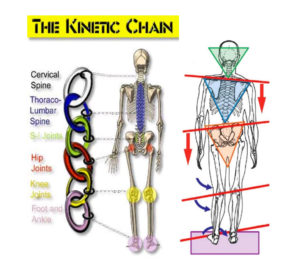 Pitching transcends the mere act of hurling a ball; it's a symphony of synchronized movements orchestrated by the kinetic chain. Picture a finely tuned machine, where every component plays a crucial role in producing optimal results. From the explosive leg drive to the seamless transfer of energy through the torso and into the arm, each link in the kinetic chain must function harmoniously to achieve maximum velocity.
Pitching transcends the mere act of hurling a ball; it's a symphony of synchronized movements orchestrated by the kinetic chain. Picture a finely tuned machine, where every component plays a crucial role in producing optimal results. From the explosive leg drive to the seamless transfer of energy through the torso and into the arm, each link in the kinetic chain must function harmoniously to achieve maximum velocity.
Central to this intricate dance is the concept of prioritizing leg and core strength over isolated arm exercises. While traditional wisdom may dictate focusing solely on arm strength, elite pitchers understand the importance of cultivating a strong foundation from the ground up. By honing the power of their legs and core, pitchers can unleash their true velocity potential while minimizing the risk of injury.
Enter programs like the Fusion System, a cornerstone of the renowned 3X Pitching Velocity Program. This innovative approach to training goes beyond conventional methods by placing a premium on comprehensive strength training tailored specifically to enhance pitching performance. Through targeted exercises designed to optimize the mechanics of the entire body, pitchers can unlock new levels of speed and precision on the mound.
In essence, the kinetic chain serves as the backbone of pitching excellence, providing the framework upon which velocity mastery is built. By embracing a holistic approach to training that emphasizes the interconnectedness of all muscle groups, pitchers can harness the full potential of their bodies and elevate their game to unprecedented heights.
Unlocking Potential Through Kinematic Optimization
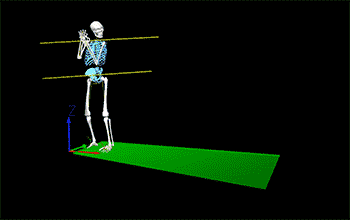 In the realm of pitching, unlocking true potential often requires a paradigm shift in how athletes approach the mechanics of their throw. It's not uncommon for pitchers to fall into the trap of relying too heavily on their upper bodies to generate velocity, inadvertently stifling their ability to reach peak performance. However, by embracing the principles of kinematic optimization, athletes can break free from these constraints and tap into a reservoir of untapped power.
In the realm of pitching, unlocking true potential often requires a paradigm shift in how athletes approach the mechanics of their throw. It's not uncommon for pitchers to fall into the trap of relying too heavily on their upper bodies to generate velocity, inadvertently stifling their ability to reach peak performance. However, by embracing the principles of kinematic optimization, athletes can break free from these constraints and tap into a reservoir of untapped power.
At the heart of kinematic optimization lies the art of recalibrating one's throwing motion to leverage the full potential of the body's kinetic chain. Rather than viewing pitching as a predominantly upper body-driven endeavor, athletes must reframe their approach to prioritize the role of the legs and core in generating force. This fundamental shift not only maximizes the transfer of energy from the lower body to the arm but also minimizes strain on the upper body, reducing the risk of injury in the process.
The key to kinematic optimization lies in redefining the role of each muscle group within the pitching motion. Instead of viewing the arms as the sole propulsion mechanism, athletes must learn to harness the power of their legs as the primary drivers of force, with the arms assuming a more reactive, elastic role in response to this energy transfer. This refined approach to pitching mechanics mirrors the techniques employed by elite pitchers such as Tim Lincecum, Aroldis Chapman, and Flex Hernadez, whose fluid, effortless deliveries serve as a testament to the efficacy of kinematic optimization.
By embracing this holistic approach to pitching, athletes can break free from the limitations of traditional mechanics and unlock new levels of performance on the mound. Whether it's shaving milliseconds off fastball speeds or achieving pinpoint accuracy with breaking pitches, kinematic optimization holds the key to unlocking the full potential of every pitcher's arsenal.
Conclusion: Increasing Arm Strength
As pitchers strive to elevate their game and unleash the full force of their pitching arsenal, the role of arm strength emerges as a cornerstone of performance enhancement. Undoubtedly, cultivating robust arm muscles lays the foundation for blistering fastball speeds and devastating breaking pitches. However, true mastery of pitching velocity transcends the mere development of arm strength alone.
In the pursuit of optimal performance on the mound, pitchers must adopt a holistic approach to training that encompasses the entire spectrum of pitching mechanics. While arm strength undoubtedly plays a pivotal role, it is but one piece of the intricate puzzle that governs pitching velocity. To unlock their true potential, pitchers must strike a delicate balance between strengthening the arms and fortifying the foundation of their throwing motion.
Central to this quest for equilibrium is the recognition of the interconnectedness of the body's musculature. By prioritizing a balanced training regimen that not only targets arm muscles but also emphasizes the development of leg and core strength, pitchers can unlock a reservoir of untapped velocity potential while simultaneously mitigating the risk of injury.
In essence, optimal performance on the mound is not merely a product of brute force but rather the harmonious integration of strength, precision, and biomechanical efficiency. By viewing arm strength as just one component of a comprehensive training regimen, pitchers can embark on a journey towards unlocking their true velocity potential and etching their names into the annals of pitching greatness.
The Trunk Excelerator: Unlocking Velocity Potential
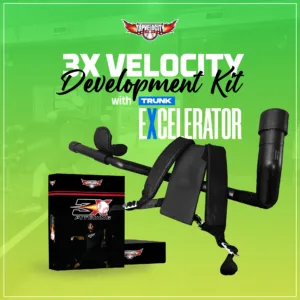 For pitchers seeking to amplify their throwing velocity while safeguarding against the risks of arm overuse, the Trunk Excelerator emerges as a beacon of innovation and efficacy. The Trunk Excelerator is a revolutionary new way to improve velocity that was created as part of the well-known 3X Pitching Velocity Program. It focuses on optimizing trunk mechanics to unlock untapped pitching potential.
For pitchers seeking to amplify their throwing velocity while safeguarding against the risks of arm overuse, the Trunk Excelerator emerges as a beacon of innovation and efficacy. The Trunk Excelerator is a revolutionary new way to improve velocity that was created as part of the well-known 3X Pitching Velocity Program. It focuses on optimizing trunk mechanics to unlock untapped pitching potential.
At its core, the Trunk Excelerator recognizes the pivotal role of the trunk – or core – in facilitating the transfer of energy from the lower body to the arm during the pitching motion. By honing the strength, stability, and rotational power of the trunk, pitchers can amplify the velocity of their throws without relying excessively on arm strength, thus mitigating the risk of overuse injuries.
Unlike traditional velocity enhancement programs that emphasize isolated arm exercises, the Trunk Excelerator adopts a holistic approach that targets the entire kinetic chain. Through a meticulously designed regimen of exercises and drills, pitchers are guided through a series of movements aimed at optimizing trunk rotation, hip mobility, and core stability – all essential components of a powerful pitching delivery.
Central to the effectiveness of the Trunk Excelerator is its integration within the broader framework of the 3X Pitching Velocity Program. By combining trunk-focused training with comprehensive strength and conditioning protocols, pitchers are afforded a comprehensive approach to velocity enhancement that addresses the intricacies of pitching mechanics while fostering long-term athletic development.
Moreover, the Trunk Excelerator serves as a testament to the principles of evidence-based practice and innovation championed by TopVelocity.net. Grounded in scientific research and real-world application, this cutting-edge approach to velocity enhancement offers pitchers a pathway to sustainable performance gains while minimizing the risk of injury – a testament to the commitment to excellence that defines the TopVelocity brand.
In essence, the Trunk Excelerator stands as a beacon of hope for pitchers seeking to unlock their true velocity potential. By harnessing the power of the trunk and embracing a holistic approach to training, athletes can embark on a journey towards pitching greatness – one characterized by speed, precision, and resilience in equal measure.
FAQs: Increasing Arm Strength
1. How can I improve my arm strength for pitching?
To enhance arm strength, focus on exercises targeting the muscles involved in the pitching motion, such as the Pectoralis major, Subscapularis, and Latissimus dorsi. Additionally, incorporate comprehensive strength training that emphasizes leg and core exercises to optimize pitching mechanics.
2. Will solely focusing on arm strength lead to better pitching velocity?
While increasing arm strength can contribute to pitching velocity, solely focusing on this aspect may lead to suboptimal performance in the long run. It's crucial to maintain a balanced training approach that prioritizes leg and core strength to maximize velocity potential.
3. How do I reverse my kinematics to optimize pitching velocity?
Reversing kinematics involves recalibrating your pitching mechanics to prioritize the legs as the primary drivers of force, with the arms acting as elastic responders. This can be achieved through targeted training programs like the Fusion System, which emphasizes comprehensive strength training tailored to enhance pitching performance.
4. Can improving arm strength reduce the risk of injury in pitchers?
While strengthening arm muscles can contribute to pitching velocity, overemphasizing arm strength may increase the risk of injury. It's essential to maintain a balanced training regimen that addresses all aspects of pitching mechanics to minimize injury risk while maximizing performance.
5. What role does the kinetic chain play in pitching velocity?
The kinetic chain refers to the interconnected series of muscle groups and joints involved in the pitching motion. By optimizing the coordination and sequencing of these muscle groups, pitchers can maximize the transfer of energy from the lower body to the arm, thus enhancing pitching velocity.
For more exclusive content visit TopVelocity Patreon!





Also are you going to ever again give out a free video analysis to anybody.
Yes, definitely!
I thought I bought the 3x velocity program so wouldn't I get a free video analysis.
You only purchased the Ace Pitcher Handbook. If you want to upgrade to the entire program you can do this. The entire program includes the analysis and the one on one email coaching which you have been getting for free up to this point because the 3X Pitching Velocity program launched last month.
I did buy 3x pitching and in the book it says you get one free video analysis.
You bought the book which is apart of the 3X Pitching Velocity Program but it doesn't include the unlimited video analysis. I have put together 4 FREE video analysis for you so far. If you want to upgrade to the entire program then you will get all the analysis you need.
Here is everything included in the entire program. http://topvelocity.net/3x-pitching